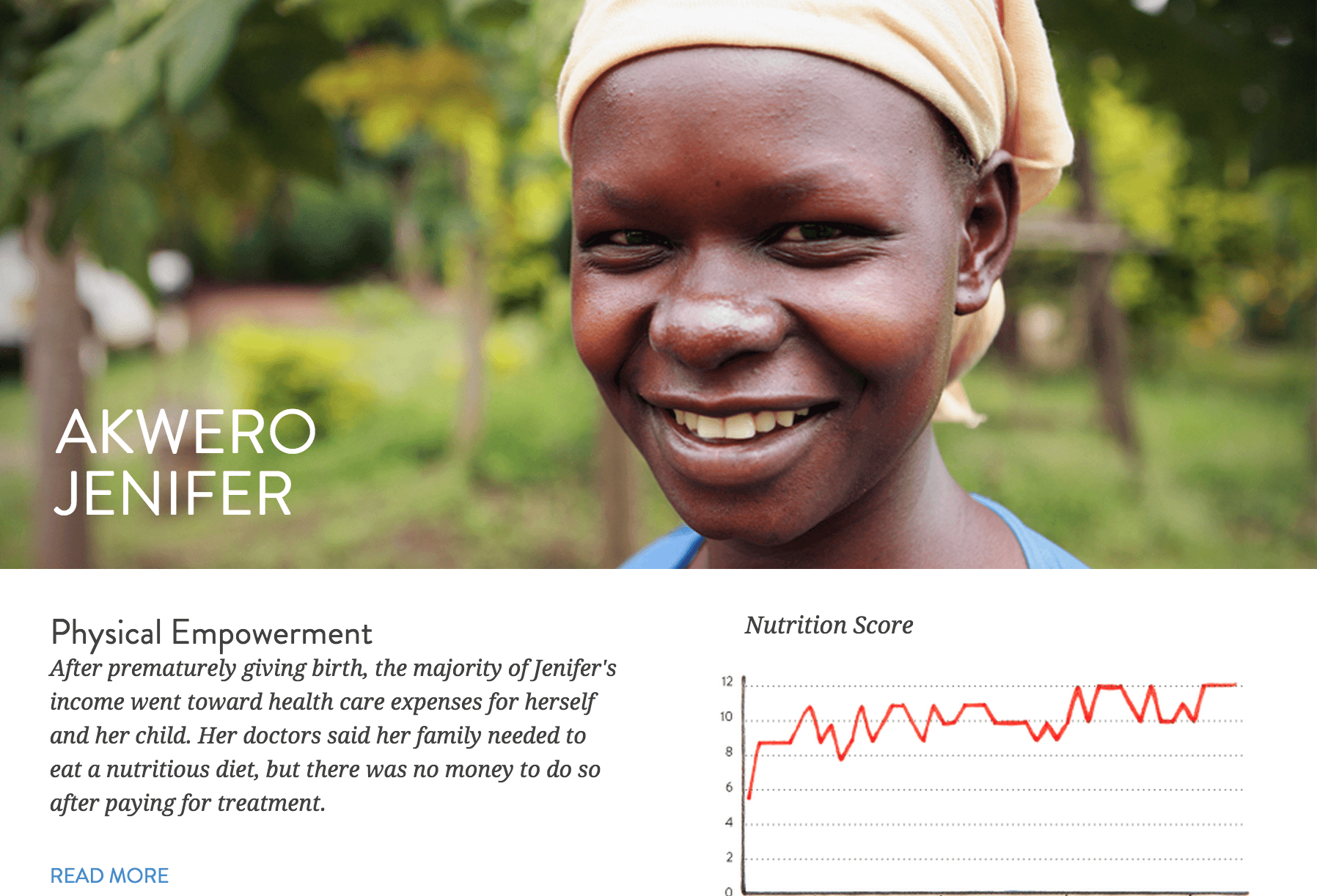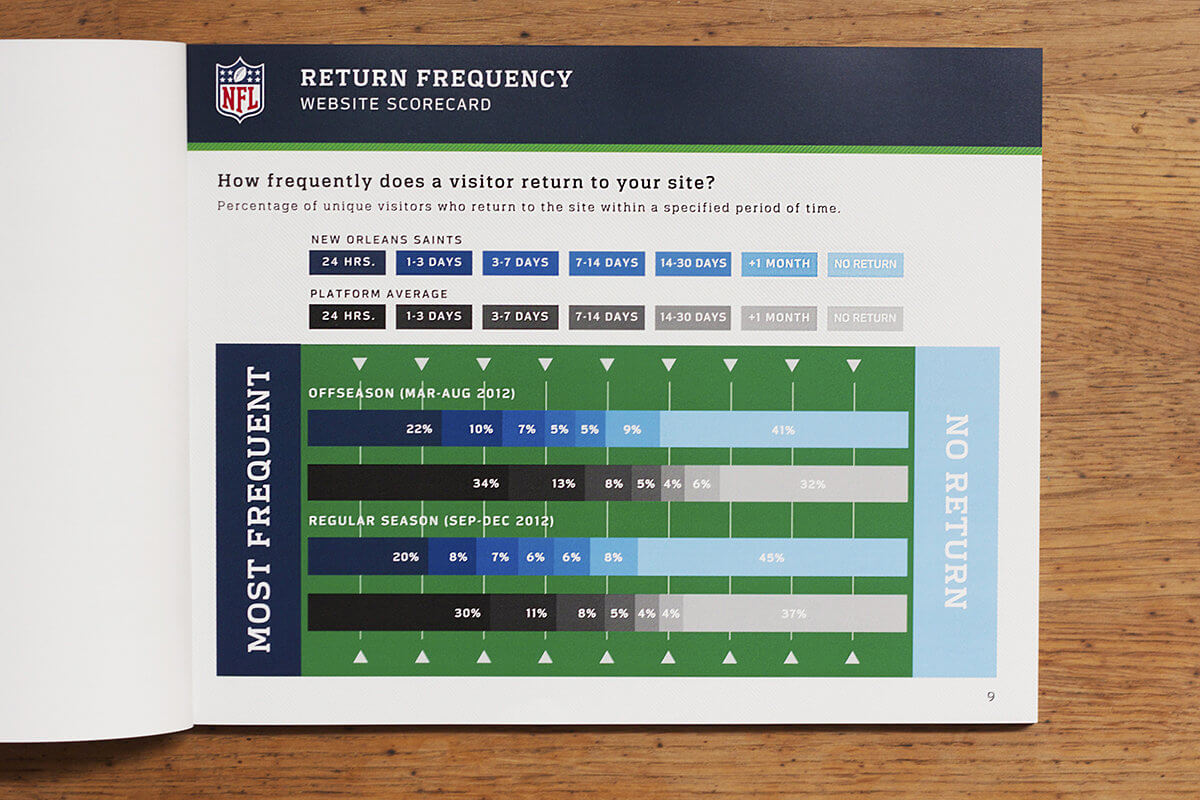Whether you’re running the numbers for a client or presenting the results of your latest research, crafting a strong, compelling report is crucial to keep your reader’s attention, make the information easier to comprehend, and influence their decision-making.
Unfortunately, we see too many reports that are too dense or dull to capture a reader’s attention. Even if you have fascinating insights or compelling data, a weak visualization, sloppy report design, or incohesive narrative can make your reader tune out pretty quickly.
We don’t believe in wasting time, energy, or resources, whether it’s yours or your readers’, especially with something as valuable as a report. Luckily, like any piece of content, a report can benefit from the same storytelling treatment that you give any piece of content marketing. With a strong narrative and slick report design, you can turn your numbers into an interesting and exciting piece of content that truly connects with your reader. Here’s how.
Tips for Storytelling in Your Reports
1) Know the Narrative
There’s a reason you’re creating a report. You might want to educate your reader, influence their decision-making, shed light on a challenge, or reveal interesting insights that support your case. Regardless of your objective, your job is to distil that info into a single narrative that captures your reader’s attention and guides them to the desired conclusion.
This is especially true with a data-heavy report. When working with numbers, you should anchor the data to an interesting narrative. (Not sure how to do that? Learn how to identify the interesting, unusual, and unique stories in your data with our step-by-step guide.)
Example: We collaborated with Goodwill of Orange County to create an annual report that told the story of “The Good Effect,” outlining how the organization and its contributors helped the community over the year.

2) Use the Right Language
Language and tone affect how the reader absorbs your narrative. It also affects how they perceive your brand. It’s important to speak in their language, at their level. Don’t talk above them, down to them, or bore them to death with jargon and buzzwords.
Always follow your brand voice, and use things like subheads and callouts to entice your reader, introduce the subject, and highlight important information.
Example: Clear Channel’s The State of Listening Today report uses clear callouts and headers to highlight new industry trends.

3) Create a Simple Hierarchy
There’s nothing more overwhelming than facing a dense block of text on a page. Presenting your story in a logical flow makes it easy for your reader to navigate the content. With clear headers, subheads, callouts, and sidebars, you can highlight the most relevant takeaways, making it easier to skim if your readers are pressed for time. (For more tips on efficient storytelling, find out how to properly guide readers through a data story.)
Example: The Climate and Land Use Alliance 2013-2016 report follows a simple structure, using section headers and callouts strategically.

4) Be Brief
Yes, you probably have a lot of information to include, but throwing everything in there is a great way to make people tune out. Compile your report, then give a second pass to condense, edit, and extract only the most relevant insights and information that support your narrative. Not only will this help you tell a stronger, more streamlined story but it will make it much easier to create a beautiful report design.
Example: This ServiceSource report calls out key insights in simple blurbs, delivering only the most relevant content.

Report Design Tips
5) Use Imagery
Everything from your cover design to the thumbnail you use on social helps you appeal to readers, but striking the right balance of visuals and copy is the key to great report design.
Eye-catching imagery, whether illustrations or photography, is visually stimulating and attracts your reader’s attention. Just make sure your imagery is appropriate for the subject matter. Remember: Design should always enhance the story, never distract. If you can’t justify how a visual element enhances the story, it doesn’t belong there.
Note: Photographs of people can do a lot to elicit an emotional response and connection to your content. (This can be especially helpful for nonprofits trying to gain support from the general public.)
Example: The Krochet Kids intl. 2013 Annual Report includes photos and backstories of the women who work for (and benefit from) the company.

6) Dress it Up with Data Visualization
Good data visualization is not just a design choice; it helps readers comprehend and retain the information presented. Data is often the star of a report, but it can easily get lost without good data visualization. (Even worse, it can be misinterpreted with incorrect data design.) To make sure your data makes the most impact, include any relevant context or insights through copy, learn how to design the most common charts and graphs, and follow these 25 tips to make your visualizations more impactful.
Example: We partnered with the NFL to produce print reports featuring data and analytics for each team’s web performance. Each report contained detailed information, presented in a visually engaging way for easy reference.

7) Use Your Visual Language
A report should be treated like any other piece of content. As a reflection of your brand, it should communicate your brand story at every level and through every design element. Font choice, colors, illustrations, and imagery should all reflect your brand style guide—and follow design best practices. (To do both, find out what your brand style guide should include and avoid these 8 common design mistakes.)
Example: Google’s Trust/SMB Whitepaper follows the brand’s visual language, artfully using the brand’s iconic colors.

Brush Up on Visual Communication
No matter what content you’re creating, learning to communicate effectively and efficiently will help you work better, foster a healthier culture, and build a stronger business. For more tips on how to do it, check out our free e-book, A Business Guide to Visual Communication, go behind the scenes of the interactive Girls Who Code annual report, and get inspired by these 40 examples of awesome annual report design.
And if you need a little help with your own report design or storytelling, let’s chat about it.




